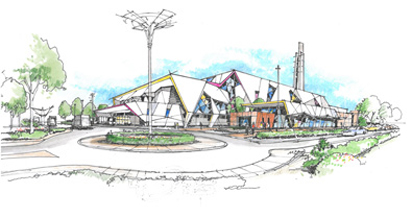Tried and proven, base load renewable energy generation from waste resources
At Phoenix Energy, we only use tried and proven Energy from Waste (EfW) or Waste to Energy (WtE) technologies sourced from reputable technology providers.
As a project development company, our philosophy is to minimise technical and commercial risk for project stakeholders by selecting the most appropriate technology for the available waste resources and bringing together an experienced project team. As a minimum, the technologies we select must be proven at a commercial scale, with multiple reference sites processing similar waste feedstocks to those being considered for a local project, and they must be able to meet the most stringent international environmental regulatory standards.
Unlike solar and wind energy generation, Waste to Energy plants
are a unique source of continuous renewable energy generation.

By integrating the disposal of waste with the generation of energy, waste to energy plants provide a solution to two of society’s greatest challenges: waste disposal and energy supply. Thermal waste to energy plants have a minimal greenhouse gas footprint relative to current landfill and landfill to energy practices. With ~1000 grate type thermal waste to energy plants worldwide, there is no doubt that such aspirations are not only achievable but demonstrable in practice.
A large scale waste to energy plant serving a major city will enable the city to achieve two of its long-term strategic sustainability goals: Increasing the generation of baseload renewable energy and also reducing household waste to landfill by up to 100%. Furthermore, by providing an alternative to both landfills (and their associated methane emissions) and coal fired baseload power generation, a waste to energy plant will actually eliminate the generation of greenhouse gases by much more than the carbon dioxide emitted by the combustion of the non-renewable components in the waste feedstock.
Benefits of a modern waste to energy plant:
- The potential for Zero waste to landfill – in addition to energy recovery, WtE projects will encourage the development of reuse markets for ash (typically around 10% by volume of the feedstock) e.g. as a construction aggregate, as is common place in Europe, the UK and Japan. Ferrous and non-ferrous metals can be recovered post-combustion from the solid bottom ash by-product and recycled, thereby further increasing recycle rates and reducing GHG emissions through avoidance of virgin materials production and associated energy consumption.
- No need for upfront pre-treatment or pre-sorting of municipal solid waste beyond good practice source separation by the householder, which reduces complexity and cost associated with waste collection and handling, and therefore does not require any change to current 2-3 bin collection systems (i.e. source separation of recyclables and green waste, where a separate collection services is available, from residual household waste).
- Increased recycling – an independent North American study has shown that communities which have a waste to energy plant tend to recycle more than communities without a WTE plant. Furthermore, those European countries with the highest recycling rates also have the largest installation of WtE facilities.
- Maximising clean electricity generation from the feedstock – lifecycle greenhouse gas assessments estimate that the potential net reduction in overall carbon emissions will be ~1 tonne of CO2-e per tonne of waste throughput, once the reductions in landfill gas emissions and other offsets (related to replacement of base load fossil fuel fired electricity generation, recovery of recyclable metals and the production of alternative construction materials) are taken into consideration.
- Long term waste supply agreements are required, which also give the community stable rates for waste collection and disposal, while also allowing the community to benefit through the local generation of baseload renewable electricity.
- Additional full time employment positions would be created for plant management, operation and maintenance. In more established markets in North America, Europe and Japan, companies are developing technologies to reuse the solid ash (or slag) by-product in construction products such as bricks and aggregate for roads, thus offering the potential for zero waste to landfill.
- Potential regional benefits and synergies – the potential for direct use of recovered energy as steam, electricity and recovered solid by-products by local manufacturing companies. This will help enhance regional energy supply and job security.
- Engage with the community and local government to raise awareness and drive improvements in source separation behaviour by households.
Phoenix Energy is a strong advocate for modern Waste to Energy (also known as Energy from Waste) facilities that use best practice technologies and processes to provide a viable, clean and sustainable alternative to landfill disposal. Waste to Energy can act as an essential and integral part of a larger urban waste management strategy and system because it complements the 3Rs (Reduce, Reuse & Recycling).
For example, the Kwinana Waste to Energy Project (please refer to the Projects tab) will change the face of waste management and renewable energy generation in Western Australia by replacing the growing reliance on unpleasant and expensive landfill disposal, with a clean, environmentally proven, sustainable waste to energy process.
Of the ~1000 similar facilities serving communities around the world, of which more than 300 are operating in Europe and the UK alone, most are within major urban population centres and operating under strict environmental standards.
The Western Australian Government’s Environment Protection Authority (EPA) and its Waste Authority have jointly concluded that: “It has been demonstrated internationally that modern waste to energy plants can operate within strict emissions standards with acceptable environmental and health impacts to the community when a plant is well designed and operated using best practice technologies and processes.” (Section 16(e), EPA Report 1468, April 2013).
Once operational, the Kwinana located facility will be eligible for accreditation as a Large Scale Renewable Electricity Generator in accordance with the Federal Renewable Energy (Electricity) Act 2000.

